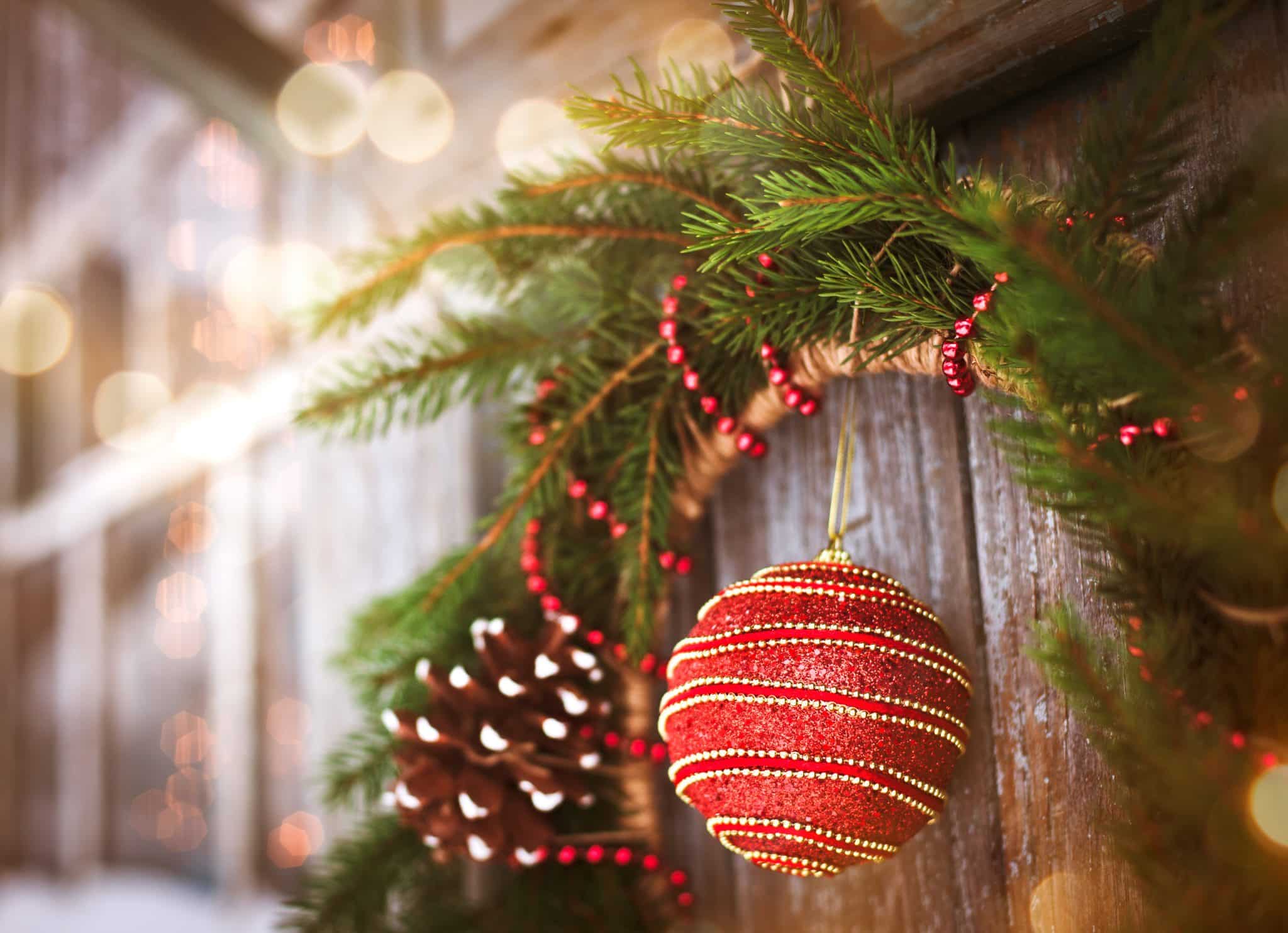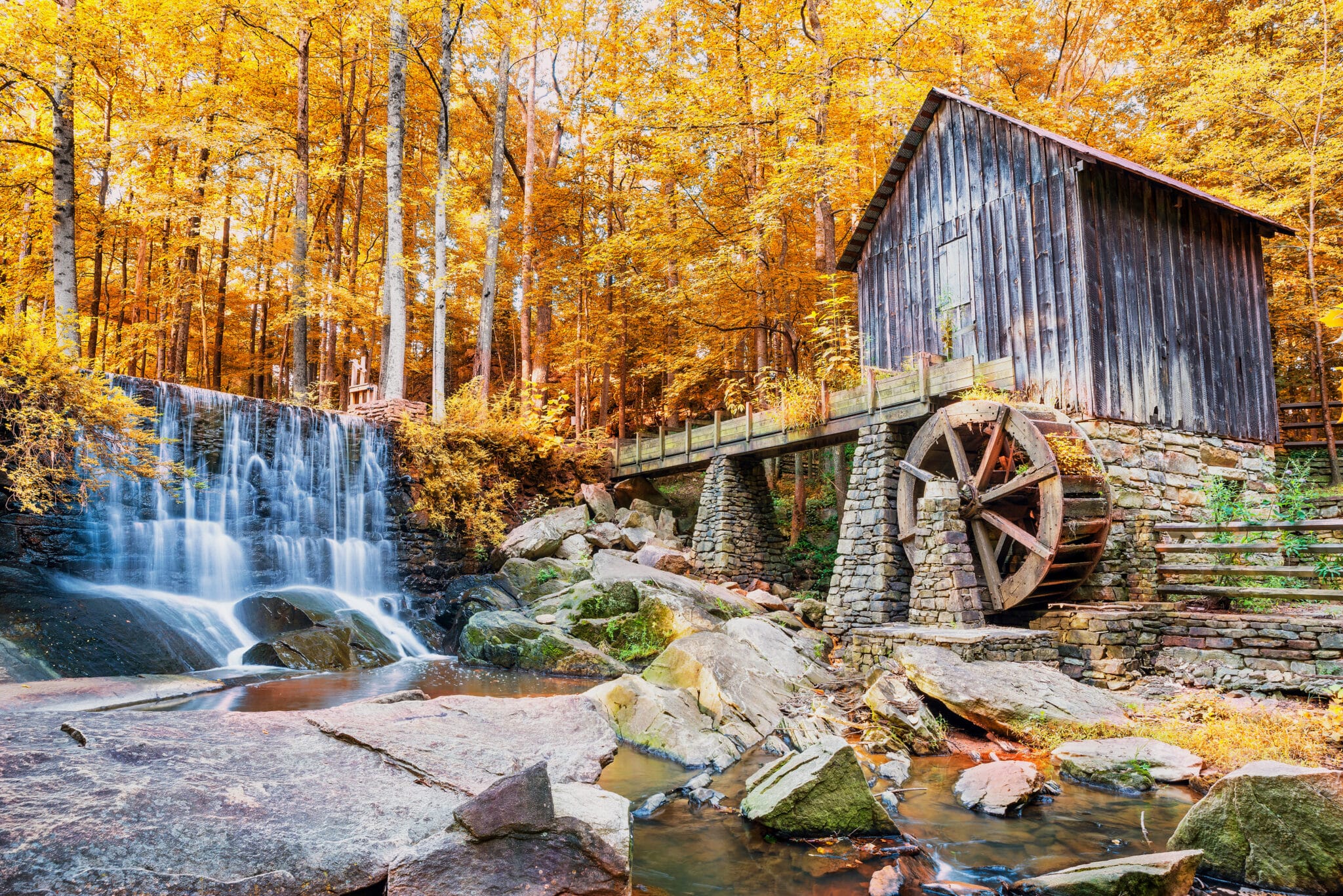Aside from being beautiful, the colors of the holiday season have some significance, some culturally and some simply commercially. From Santa’s suit to bows on boughs, red and green are in abundance all December—but how did their acceptance as Christmas colors happen? And what do Christmas colors mean?
Related: Christmas Trivia: 50 Fun Questions with Answers
Why did red and green become Christmas colors?
Before they were associated with Christmas, red and green were the colors of the red wine and green leaves seen during the Roman celebration, Saturnalia, according to The Farmer’s Almanac. This celebration honored the Roman god, Saturn, and happened around the Winter Solstice, with some of its traditions passing down to Christmas, including the colors red and green.
These two colors were also associated with Celtic winter celebrations, per Our Celtic Community. They revered holly for its evergreen (and red) properties, even in the bleak, cold months. That, combined with the colors’ use on religious screens planted the seeds that make most of us associate red and green with Christmas—and, America being what it is, of course, capitalism played a role as well.
According to NPR, in the Victorian era, Christmas had a much wider and varied palette, which featured combinations of red and green, red and blue, blue and green, or blue and white—and that included Santa Claus’ signature outfit. It wasn’t until 1931 that a particular brand’s ad campaign really pushed the red, green, and round images of Christmas that we know today.
Related: 75 of the Best “Merry Christmas!” Wishes To Write in Your Christmas Cards This Year
“Coca-Cola hired an artist to create a Santa Claus. They had done this before, but this particular artist created a Santa Claus that we associate with the Santa Claus today in many ways,” Arielle Eckstut, the co-author of Secret Language of Color, told NPR. “He was fat and jolly—whereas before he was often thin and elf-like—and he had red robes. … And so the fact that all these things came together—this friendly, fat Santa in these bright red robes, which, I don’t think is a coincidence, match the color of the Coke logo—this really took hold in American culture.”
The juxtaposition of a plump, red-coated Santa Claus in front of a hunter-green backdrop popularized the combination, Eckstut said.
“It solidified in our collective imaginations the red of Santa’s robes with the green of fir trees and holly and poinsettia that we already had in our minds,” she said. “This particular shade of red and green came to signify Christmas.”
What are the two most popular Christmas colors after red and green?
Gold and white take the No. 3 and No. 4 spots in terms of Christmas color popularity, according to Today.com. They both beautifully complement red and green, so it makes sense! Of course, silver, blue and purple are also up there thanks to the fact that silver fits in, blue has a tie to Jesus’ mother Mary and purple is a prominent color during Advent.
Related: 50 Fun Christmas Trivia Questions (with Answers) for Family Gatherings
What are the five most popular Christmas colors?
The five most popular Christmas colors are red, green, gold, white and silver.
What do Christmas colors mean?
Overall, what do these traditional colors mean? While Coca-Cola had a hand in popularizing red for Christmas, nature also plays a role in the popularity of red and green. Eckstut told NPR that holly—commonly used in winter holiday decor—had a hand in making red and green so ubiquitous in December (which we mentioned earlier with the Celtic tradition).
“Holly has played a huge part in this red and green association, and it dates back to winter solstice celebrations with the Romans, and maybe beyond,” she said. “And also, holly is associated with the crown of thorns of Jesus. And just those beautiful bright red berries and those deep green leaves are the exact colors that we really come to think about when we think about Christmas.”
Traditionally, red is considered to represent the blood of Jesus Christ, while green is a nod to the everlasting life Christians believe that he brings. White marks holiness and light, while gold can represent the sun—as well as the Son, referring to Christ himself being the Son of God.
Another little-celebrated Christmas color? Purple, which, as stated above, is actually the official color of Advent, the four weeks before Christmas. During the third week of advent, Catholics light a pink candle among the three purple Advent candles, but that really hasn’t caught on as a popular Christmas color. Yet.
Next, these 100 best Christmas quotes are guaranteed to get you into the holiday spirit!
Disclosure: This article may contain affiliate links, meaning we could earn a commission if you make a purchase through these links.






